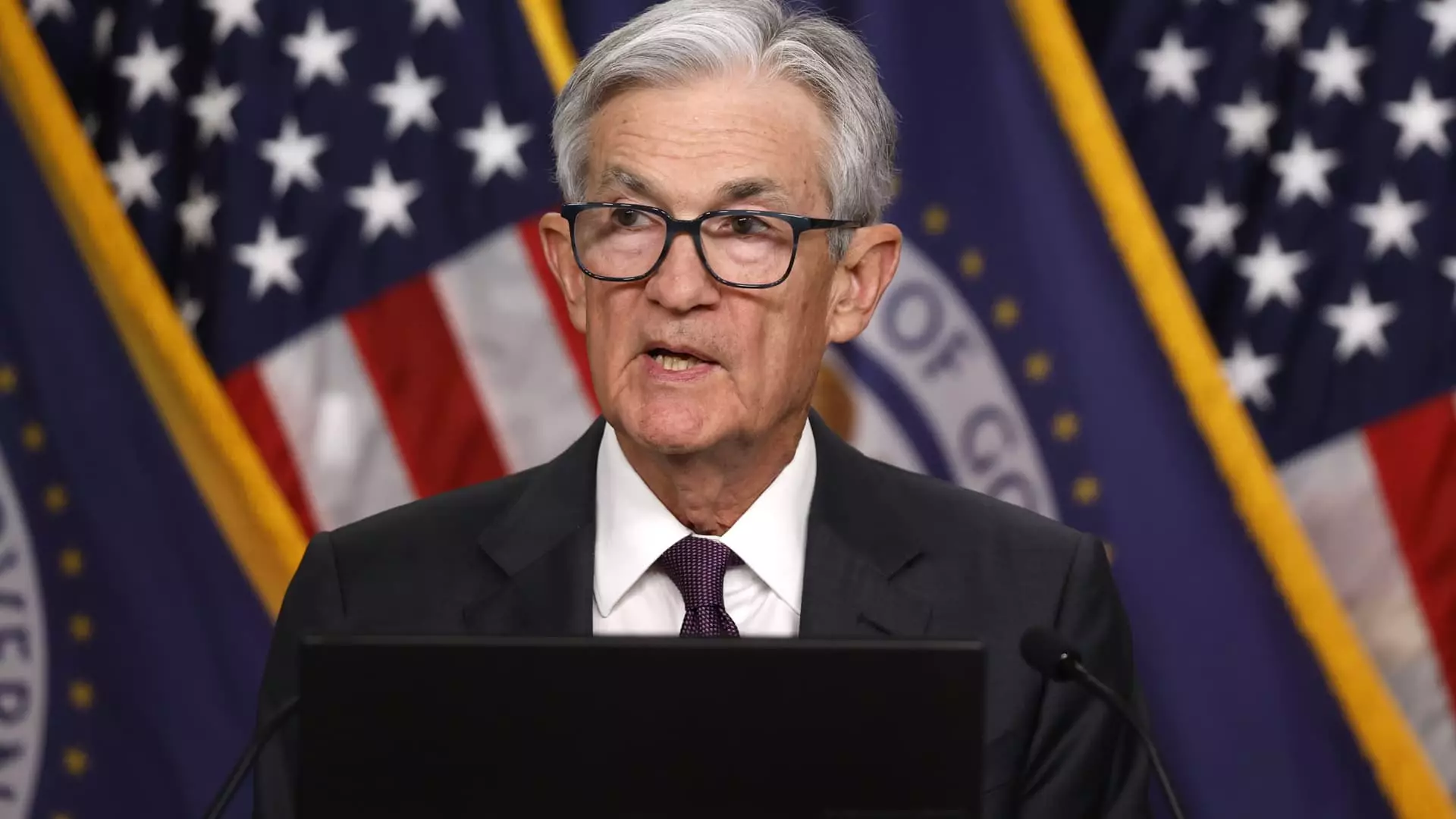The economic landscape of the United States is currently precarious, with the Federal Reserve’s recent decision to maintain interest rates at 4.25%-4.5% reflecting a cautious yet ambiguous stance. This indecision is rooted in rising uncertainty, stemming primarily from the ongoing political turmoil surrounding trade relations and tariffs. As the Federal Reserve navigates these treacherous waters, one cannot help but wonder if their patient approach might ultimately backfire, exacerbating economic challenges rather than alleviating them.
Interest Rates: A Holding Pattern Amidst Market Turmoil
For the past several months, the Federal Reserve has persisted in its decision to keep interest rates unchanged, a move that reflects more than just caution. The Fed’s statement acknowledged rising uncertainties, yet failed to provide a reassuring path forward. By holding steady, the Federal Reserve indicates a wait-and-see attitude that could stagnate progress at a time when more decisive action is needed.
The impact of rising tariffs on imports is beginning to reverberate through the economy, leading some to anticipate inflation coupled with a slowdown in growth—a scenario reminiscent of a stagflationary environment that we have not seen in decades. As Chair Jerome Powell pointed out, tariffs threaten to push prices higher while simultaneously suppressing economic expansion, creating a perfect storm that could lead to widespread economic malaise.
The Trade War’s Ripple Effect
The Trump administration’s aggressive tariff policy has introduced a level of economic unpredictability that complicates the Federal Reserve’s dual mandate of maintaining full employment while ensuring stable prices. If tariffs lead to higher costs for businesses and consumers, the fallout will likely extend beyond inflation, affecting consumer behavior and ultimately employment rates. The intricate web of supply chains could falter under the pressure of rising costs, leading to layoffs and a decrease in consumer spending—a dangerous cycle for a market that was once a bastion of robust growth.
Moreover, the trade war has left businesses grappling with anxiety, as reported in numerous surveys conducted with industry leaders. The fear of supply chain disruptions and escalating prices forced companies to rethink their strategies, which in turn can inhibit investment and hiring—all crucial components needed to sustain economic momentum.
The Stock Market’s Fragility
Despite a brief recovery in the stock market post-Fed announcement, one must question the endurance of this upward trajectory. Stocks, often a barometer for investor confidence, have reflected the tumultuous nature of trade negotiations but remain highly susceptible to the whims of policy changes. Analysts suggest the implications for risk assets are negative, especially as the uncertainty surrounding tariffs compounds existing anxieties among investors.
Moreover, the market’s volatile pricing behaviors leading into the Fed’s meeting exemplified a lack of clear direction. As traders leaned toward the notion of potential interest rate cuts, the Fed’s decision to maintain the status quo could reverse any positive sentiment, leaving investors uncertain about the future landscape of monetary policy and its implications for economic growth.
The Dual Mandate: An Impossible Balancing Act?
Finding equilibrium in the conflicting goals of promoting full employment and controlling inflation is increasingly challenging. The Fed’s patience may appear prudent on the surface, but miscalculations could have sweeping consequences. As job growth continues at a measured pace, and unemployment rates remain relatively low, macroeconomic indicators alone cannot mask the potentially damaging effects of punitive tariffs on the economy.
One must ask if the current economic metrics represent the full scope of the U.S. economic reality. A nuanced approach may be required, one that recognizes that while employment numbers appear stable, the broader implications of tariffs and trade wars might be quietly eroding the foundations on which these figures rest.
What Lies Ahead?
As the Federal Reserve continues its cautious dance along the edge of uncertainty, various sectors of the economy remain on edge. The question of whether we will witness the early signs of stagnation looms large, particularly if the Fed maintains its current course of inaction. With each passing day, the intertwined fates of trade policy and economic stability become more pronounced, and the imperative for the Fed to adapt will persist.
Whether the Federal Reserve will case a proactive stance remains to be seen, but current events suggest that stasis could yield far worse consequences than taking calculated risks. In this climate of uncertainty, the time for adaptive monetary policy is now—before American consumers, workers, and businesses feel the full brunt of indecision.

